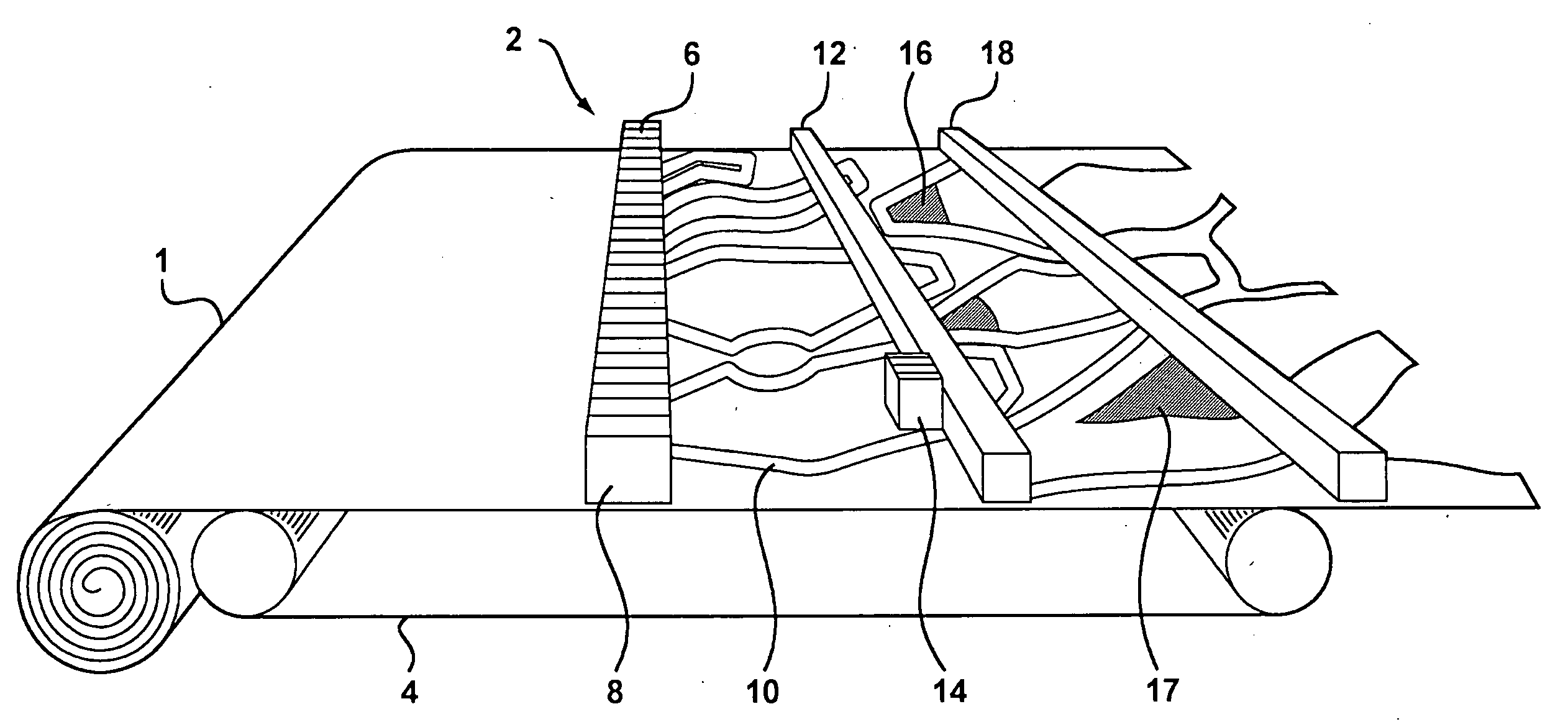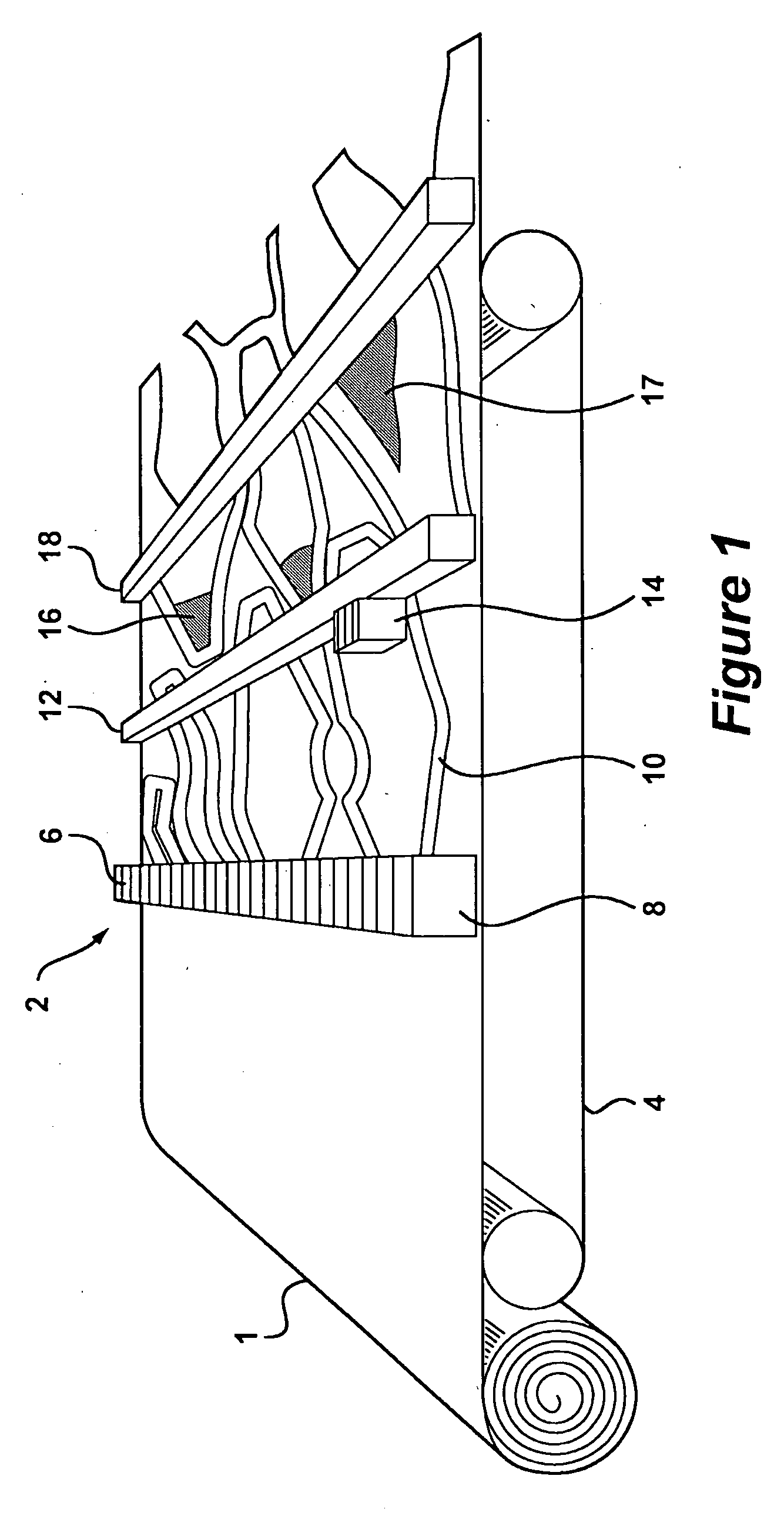Method for Providing a Localised Finish on Textile Article
a technology of textile articles and localised finishes, applied in the direction of dyeing process, bandages, transportation and packaging, etc., can solve the problems of low concentration of the desired functional, relatively high environmental impact, and long throughput time, and achieve the effect of improving functionalities
- Summary
- Abstract
- Description
- Claims
- Application Information
AI Technical Summary
Benefits of technology
Problems solved by technology
Method used
Image
Examples
example
[0079]A formulation according to Table III containing an active flame retardant component was prepared. It should be noted that although the flame retardant agent Flammentin KRE™ is present at 70 wt %, it is in a 40% aqueous solution. The overall concentration of functional agent is therefore 28 wt %.
[0080]The formulation was found to have the physical properties according to Table IV
[0081]The formulation Man 41f was deposited onto 280 gsm Cotton BD using a Domino JetArray™ inkjet printer. Printing a drop volume of 1300 pL at a cross web resolution of 54 dpi and a down web resolution of 369 dpi achieved the desired active functional coat weight (for this fabric weight) of 11.2 gsm
TABLE IIIPercentage ByFormulation Man 41fFunctionWeight (%)Deionised waterMedium18.83Respumit S (10% in DIAntifoam0.02water)Polyethylene glycol 200Humectant10.00Nuosept 491 (10% in DIBiocide1.00water)Zonyl FSA (10% in DISurfactant0.15water)Flammentin KRE (40%Flame Retardant70.00solids)
TABLE IVMan 41f Proper...
PUM
| Property | Measurement | Unit |
|---|---|---|
| diameter | aaaaa | aaaaa |
| volumes | aaaaa | aaaaa |
| outlet diameter | aaaaa | aaaaa |
Abstract
Description
Claims
Application Information
 Login to View More
Login to View More - R&D
- Intellectual Property
- Life Sciences
- Materials
- Tech Scout
- Unparalleled Data Quality
- Higher Quality Content
- 60% Fewer Hallucinations
Browse by: Latest US Patents, China's latest patents, Technical Efficacy Thesaurus, Application Domain, Technology Topic, Popular Technical Reports.
© 2025 PatSnap. All rights reserved.Legal|Privacy policy|Modern Slavery Act Transparency Statement|Sitemap|About US| Contact US: help@patsnap.com



